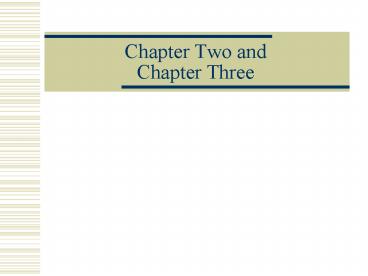Chapter Two and Chapter Three - PowerPoint PPT Presentation
1 / 17
Title:
Chapter Two and Chapter Three
Description:
Chapter Two and Chapter Three Objectives What is Motion? Measuring Motion Artstotle s views Horizontal versus Vertical Motion Newton s Laws of Motion Momentum ... – PowerPoint PPT presentation
Number of Views:136
Avg rating:3.0/5.0
Title: Chapter Two and Chapter Three
1
Chapter Two and Chapter Three
2
Objectives
- What is Motion?
- Measuring Motion
- Artstotles views
- Horizontal versus Vertical Motion
- Newtons Laws of Motion
- Momentum
- Circular Motion
- Law of Gravition
3
Motion and Measuring Motion
- Change in position
- Passage of time
- Measuring Motion
- Speed
- Distance/time
- Instantaneous versus Average
- Velocity
- Acceleration
- Change of velocity/ time
- Acceleration versus Deacceleration
4
Motion Examples
- Speed Example 2.1
- Acceleration Example 2.3
5
Aristotles Views
- Two spheres
- Sphere of perfection versus Sphere of change
- Natural versus Forced Motion
- Elements earth, air, fire, and water
- Reqired force by people
- Could not explain interaction at a distance
6
Horizontal versus Vertical Motion
- Horizontal
- Leaning Tower of Pisa
- Rolling Balls
- Inertia
- Vertical
- Free fall
- Galileo versus Aristotle
- Constant versus Accelerating objects
7
Horizontal versus Vertical (cont.)
- Vertical (cont.)
- D(1/2)at2
- Confirmed with rolling ball
- Ag9.8 m/s2
- T?(2d/g)
- Compound Motion
- A combination of vertical and horizontal motion
8
Newtons Laws of Motion
- Edmund Halley
- Christmas Day, 1642
- Trinity College, Cambridge
- Halley Principia, planetary motion
- Well accepted
9
Newtons First Law of Motion
- Every object retains it state of motion of its
stat of uniform straight-line motion unless acted
up by an unbalanced force - Inertia
- Mass
10
Newtons Second Law of Motion
- The acceleration of an object is directly
proportional to the net force acting on it and
inversely proportional to the mass of the object - Weight is a force
- F ma
11
Newtons Third Law of Motion
- Whenever two objects interact, the force exerted
on one object is equal in size and opposite in
direction to the force exerted on the other
object - Example Standing on the Floor
- FAB FBA
12
Newton Examples
- Second Law Example 3.1
- Third Law Example 3.5
13
Momentum
- The total momentum of a group of interacting
objects remains the same in the absence of
external forces - Pmv
- Unusual
- P gives no clues
- Kg m/s has no other name
14
Circular Motion
- Centripetal versus Centrifugal
- No true Centrifugal
- All circular motion inside
- acv2/r
- Fmv2/r
15
Newtons Laws of Gravitation
- Every object in the universe is attractedto
every other object with a force that is directly
proportional to the product of their masses - F GM1M2/R2
- G 6.67 X 10-11 Nm2/kg2
16
Force and Gravitation Examples
- Circular Motion Example 3.7
- Gaviation Example 3.9, 3.10
17
Homework
- Chapter Two
- Questions for Thought
- 1, 6, 9
- Parallel Exercise
- 3, 5
- Chapter Three
- Questions for Thought
- 1, 4, 9
- Parallel Exercise
- 4, 10































